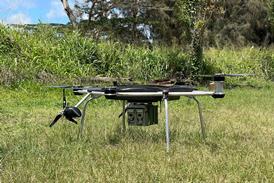Cracks in two Airbus A310s have led the European Aviation Safety Agency to institute two more airworthiness directives on main landing-gears of type variants A300B4, C4, and F4, A310, and A300-600 and -600(ST).
The cracking, detected in main landing gear Rib 5 aft-bearing forward lugs, was due to pitting corrosion in one wing of each aircraft, says EASA. "Medium to heavy" corrosion was subsequently discovered in lugs of the opposite wings.
Rib 5, a main structural member, carries all main landing gear loads and cracks could lead to undercarriage collapse. Aft bearings incorporate bushed lugs that comprise the main landing gear rear-suspension point. Officials say that undetected cracks could affect structural integrity.
The two ADs retain the requirements of an earlier emergency AD that mandated repetitive detailed visual inspections and has been revised following Airbus development of new ultrasonic inspections. After initial inspection, detailed visual inspections will be required every 100 flights (or ultrasonic inspection every 675 flights). Cracks must be reported to Airbus before next flight.
Cracks have been found only on A310s, but EASA says that they could occur on A300s, A300-600s, or A300-600(ST)s. The ADs do not apply to aircraft previously repaired by introduction of interference-fit bushes.
Three years ago, EASA issued an AD after a crack was found in a similar lug of an A330. Because no "root cause of this single event" was found, EASA required all A330s and A340s to be subject to indefinite repetitive detailed visual inspections - some as frequently as every 100 flights.
The manufacturer thought that if no further incidents were detected the requirement might be eased after perhaps two years, but Airbus recently confirmed a second occurrence.
Single-aisle Airbus A320s have experienced similar cracking (at wing Rib 5) as a result of stress from corrosion occurring after bushes rotated within the lug, triggering the use of high-interference fit bushes.
Source: Flight International
















